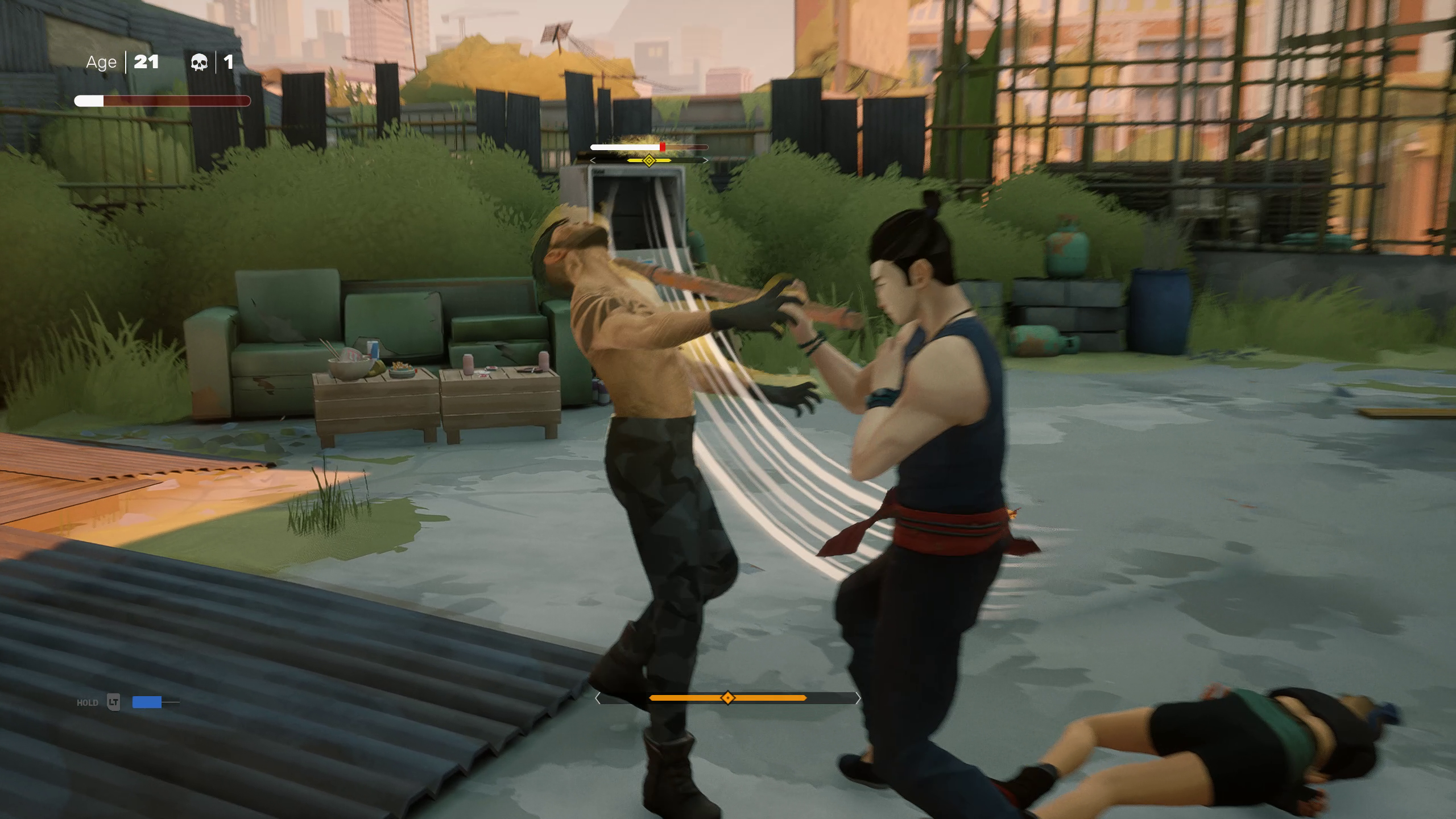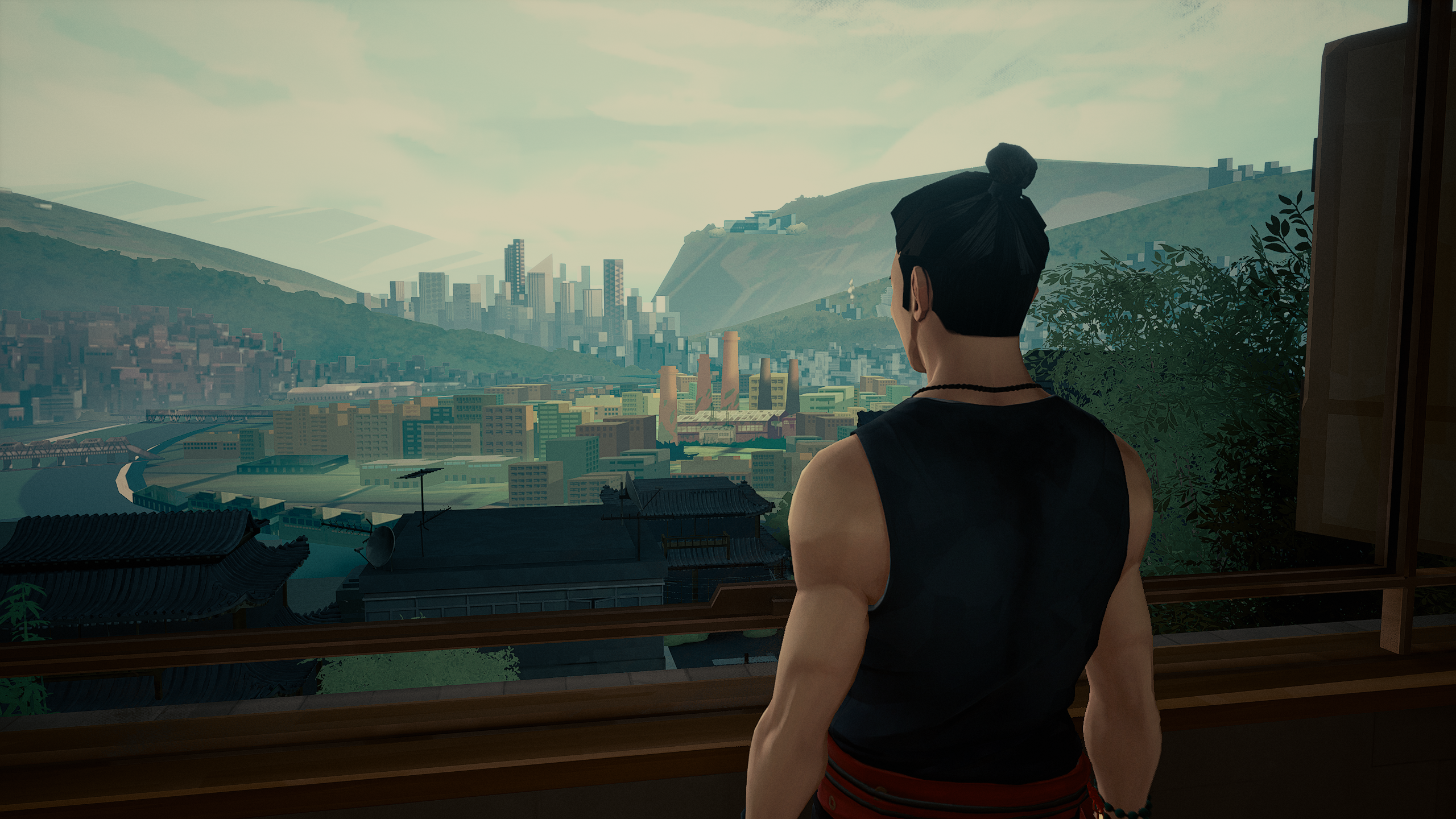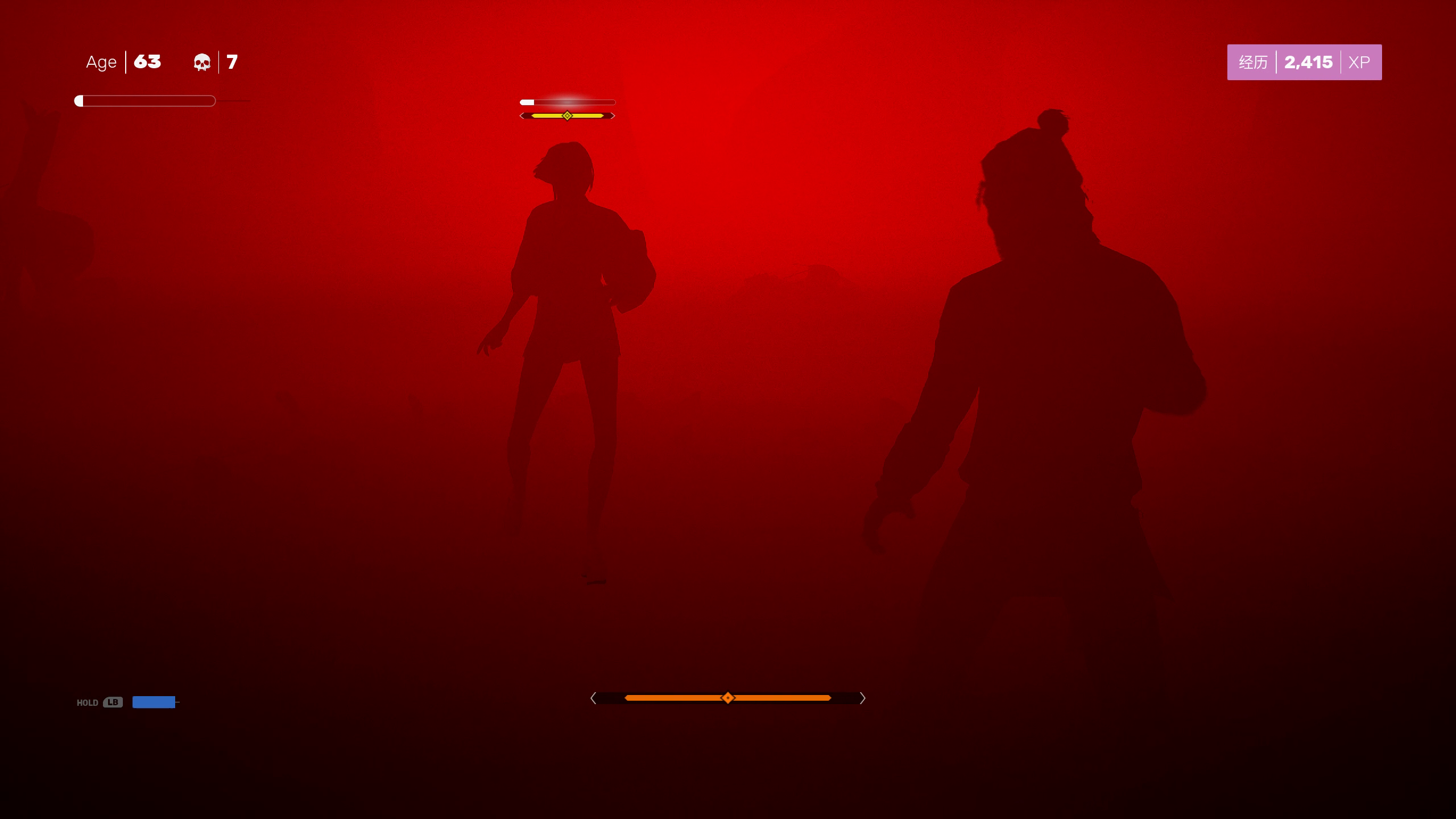Absolver How to Fight Slain Again
Our Verdict
Sifu will test your patience, but learning how to coolly dismantle a room full of goons with virtual kung fu is worth the pain.
Need to Know
What is it? A challenging singleplayer brawler inspired by kung fu and martial arts movies.
Expect to pay: $40
Developer: Sloclap
Publisher: Sloclap
Reviewed on: Intel Core i5-9600K, 16GB RAM, Nvidia RTX 2070 Super
Multiplayer? No
Link: Epic Games Store
Sifu's protagonist wagers that revenge against the kung fu masters who murdered their father is worth their entire adult life, and as I fought one of those masters for the 20th time, I couldn't help but feel like I was becoming the butt of a joke. Was mastering the ability to dodge bullshit spinning trip kicks really worth this portion of my lifespan? Would the achievement notification after I slayed Sifu's final boss fill me with a profound sense of satisfaction that made it all worthwhile?
Well, it didn't, and the story was disappointing, but at risk of sounding like I'm quoting some misattributed kung fu aphorism, the experience of mastering Sifu's fighting (well, trying to master it) is enough of a reward in itself. It frustrated the hell out of me, but like the bag of chocolate chips I ostensibly bought for baking a few weeks ago, I can't stay out of it, especially at around 11 pm, when I know I should just go to bed. That's down to some of the most intrinsically enjoyable melee combat I've experienced—fluid, funny, improvisational—and a devilish structure that taunts me with its contemptible fairness.
Wizening warrior
Sifu is like a dickish friend who's always pointing out that whatever perceived injustice they've committed against you is technically not an injustice at all, and is in fact perfectly fair and even generous, if you really think about it. It's a brawler with just five levels, each of which ends in a two-stage boss fight. Except for the final boss's slightly annoying immunity to certain attacks, there are no tricks. The bosses can all be defeated just like any other opponent, and the opening credits even show you how to fight them. And when you make it to the second phase of a boss fight, Sifu even restores all your health. It's so charitable that every time I died, I said a few short words of gratitude through clenched teeth.
You aren't even out of the fight when Sifu kills you (which it does frequently, if I haven't made that explicit enough). Thanks to a magic talisman, the protagonist can be resurrected on the spot, which ages them by a number of years that increases every time they're slain (and decreases under certain conditions). That gives them more than 10 chances to finish their mission at the cost of blowing through their 20s, 30s, 40s, 50s, and 60s over a few days. Hey, no big deal—some of those years were probably gonna suck, right?
What's more, you don't have to beat all five levels and their bosses in one run. Once you've reached a level, you can restart it as many times as you want, always beginning from the lowest age at which you finished the previous level. If you're struggling to beat a boss—the bloodthirsty, demonic museum owner, for instance, or the corporate CEO who hides out in a mine—one option is to give yourself more leeway by attempting to finish the previous level at a younger age. You might need to replay the level before that level, too, though, and at that point you may as well start from the beginning and grind out some permanent skill unlocks.
That's the devilishness of Sifu: When the way forward is blocked, you don't get to throw up your hands and say, "To hell with it, I'm stuck." You can always admit your deficiencies and go back in time to do better. (You've been shown nothing but generosity, after all!) That's what draws out what would otherwise be a short game. Even with unlockable shortcuts, most levels contain a few significant encounters before you can reattempt the boss fight, and if you screw up and experience a few unwanted birthdays before you even get to the boss chamber, well obviously you've got to restart the whole level. Repeat, repeat, repeat.
Above: How boss fights tend to go on the first attempt.
I don't know if Sifu would be possible before SSD times, because even as it stands I think it takes too long to restart a level, never mind get back to the boss fight. Once loaded, there's an annoyingly languid camera tilt down to show the protagonist entering the scene before you can take control, which contributed to my occasional desire to kick Sifu off a cliff. It's about repetition, which makes any and all forced lingering irritating. There are also pointless moments where you've got to listen to an inane line of dialogue and respond before progressing—I do not need to ask what the goddamn three trials are the 30th time I am doing the three trials!—and there are beautiful but strangely long, unpopulated passageways everywhere you go.
It's irritating how compelling Sifu is in spite of all that. I can't say that I was exactly happy to beat up the same nightclub bouncer 50 or so times on my way into the second level, but I didn't feel I could accept defeat, either. And at least when my cortisol levels are within a normal range, beating up bouncers in SIfu is exceptionally fun.
Above: I've punched this poor bastard's sun glasses off his face so many times.
The path to mastery
All your time in Sifu is spent heading toward bosses or fighting them, but they aren't its best fights. The boss battles are all one-on-one bouts, and although I should probably thank the videogame gods that we've been spared a boss who calls in waves of reinforcements, this is one game where that might've actually been good.
Beating solo enemies in Sifu largely involves the same pattern memorization you can find back in the NES era of gaming, with some variance to keep you on your toes. Inscribing attack patterns into your brain folds is a tried and true form of fun, and I did delight in finally snuffing out each boss, easily dodging combos that once tormented me—even the damned sweeping trip attacks. But Sifu shines where memorization meets improvisation and playfulness, an experience mainly found in the goon-filled rooms on the way to the bosses.
It is enormously satisfying to stand in place dodging every foot and fist and baseball bat that enters your airspace.
You can produce wildly diverse combinations of kneeings, elbowings, kicks, punches, and throws from just two buttons and an analog stick. (There's keyboard and mouse support, too, but it feels like playing Rocket League that way: doable, but weird.) It's fun just to take part in such a stylish display of imagined (but grounded) athleticism, but Sifu's brilliance lies more in defense than offense.
While holding block, flicking the analog stick down dodges high attacks, causing the protagonist to slip and roll around and under haymakers, kicks, and grabs, which basic enemies telegraph clearly like the amateurs they are (thanks to Sifu being a singleplayer game, it can slow down time to make this easier). It's possible to avoid most attacks that way, and at this point basic enemies struggle to land a single blow on me, even when they've got me surrounded. It is enormously satisfying to stand in place dodging every foot and fist and baseball bat that enters your airspace like a pro boxer who outclasses their opponent and knows it.

You never have to stop putting on that show of agility. Sifu's take on a stamina meter, called "structure," isn't a resource that depletes as you dodge in place or sidestep or even run away from a fight to regroup. Only holding down block to stop incoming strikes will eventually be punished. It's a great system: All you have to worry about is not getting hit and hitting back, and if you do that, you will never run out of fighting energy.
It gets really fun when all the possibilities of Sifu's combat flow together fluidly in one long brawl that it doesn't seem like you can possibly be controlling, although you are. There's a big fight inside the nightclub level that can't be avoided, and so I've done it dozens of times. It's always a little different, but a snippet of it might go something like this: I run in and beat a guy to the floor with a baseball bat, bounce it off someone else's forehead, dodge a punch from behind me and then throw a backhand into their temple without turning around (the charged backfist attack is one of my favorite unlocks), trip another combatant with a kick and then dodge an incoming punch by kneeling down to hammer them with punches, stand the tripped guy back up and palm strike him over a staircase, sending him tumbling onto the dance floor, kick an ottoman at another dude to throw out his legs, too, and so on.
There's much more you can do. There are special attacks that duck under incoming strikes or turn you around, for instance, and many of them behave differently when you're holding a bat, sword, or staff. It's also possible to parry strikes instead of dodging them, but I still struggle with the peculiar timing—the system could be clearer, but when I get it right, it opens enemies to throws which can be used to create space, knock over other enemies, or set up special chasing attacks.
Even after beating the game's final boss, I have neither mastered nor unlocked all of Sifu's tools. I'm sure I'll replay it, but I wish I could just treat it like a combat sim program from The Matrix, filling rooms with weapons and objects and random configurations of combatants rather than wandering into the same groups again and again—there's no randomization to speak of, and the training mode just provides a single immortal target who can be instructed to use basic attacks or be passive.
Strange dreams
The kung fu revenge tale that propels Sifu's protagonist through its levels comes across like someone's poorly-remembered dream. In its otherworldly China, nightclubs, corporations, and medical centers are all run by elusive kung fu masters, a drug lab transforms into a bamboo grove, and a museum elevator leads to a moonlit night.
Like so many dreams, the plot probably matters more to the dreamer than to anyone else—the gist is that the bad guys killed your dad—but Sifu's logic can be enjoyably uncanny and its visual effects are fantastic, running easily on my RTX 2070 Super (with DLSS on). At one point, waves of golden energy rise from a deep-earth bell, seeming to liquify banded iron ore in the cave walls surrounding you. Rather than Sifu's clumsy dialog and character barks, I wanted that powerful foreshadowing to be paired with some of Max Payne's preposterous noir monologuing: "My future was ringing in my ears…"

Sifu's writing can't compare, but Remedy's waking nightmares in Max Payne and Control do make for a decent point of comparison, and in small ways so does Hideo Kojima's brand of conspiracy fiction. The first boss, an old botanist, reminds me superficially of Metal Gear Solid 3's elderly sniper, The End, although as far as I can tell you can't beat him by letting him die of old age.
Quentin Tarantino films are really Sifu's nearest comparison. The opening cutscene is reminiscent of O-Ren Ishii's animated origin in Kill Bill, and like those movies it's guided in large part by a fascination with cliché and archetype. Martial arts films are the major inspiration for both, and early in Sifu there's a direct nod to the hallway fight in Oldboy. That first level doubles as an homage to The Raid, taking place in a decaying apartment building strewn with unconscious "junkies" who the protagonist notes aren't a threat, more or less informing us that they're just props.
They're slightly more than that by the end, as the expensive-looking healing center at the conclusion provides some critical contrast. That connection may say more about the country I live in than China, though. Sifu's point of view on the nation it's set in is hazy. The Paris-based studio worked with Chinese consultants, and its creative director is associated with a French Pak Mei kung fu master, the chosen disciple of master Lao Wei San in Foshan. Reverence for that tradition and lineage is obvious in the school that acts as the protagonist's home base between levels; its small details seem to come from observation. The other places, however, come across like Control's Oceanview Motel: Not generic, exactly, but locationless. They could be part of the fictional world in Sloclap's previous game, Absolver.

What is gained from these kung fu and kung fu movie enthusiasts is mainly the mechanical videogame adaptation of a specific style of kung fu. I can't say whether or not the character shows faithful form, but the cohesiveness of the moveset comes through brilliantly. And I did have the experience of "mastery through practice" that was promised. In that way, Sifu's focus on kung fu tradition is a success.
I wish I had recorded my first blundering advance through the opening stage so that I could see just how far I've come. It's hard to remember being a novice at something after you've trained so much that you can no longer say exactly how you do it: At this point, I just dodge when it's time to dodge and attack when it's time to attack. That's a lot more complicated to do in the physical world, but 30 hours with Sifu's simplified videogame version can at least get you a heady whiff of kung fu mastery.
SIFU
Sifu will test your patience, but learning how to coolly dismantle a room full of goons with virtual kung fu is worth the pain.
Source: https://www.pcgamer.com/sifu-review/
0 Response to "Absolver How to Fight Slain Again"
ارسال یک نظر